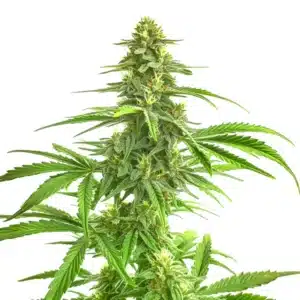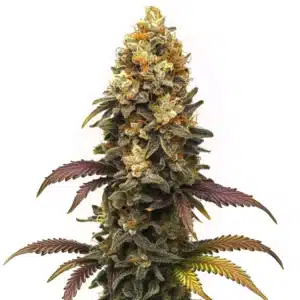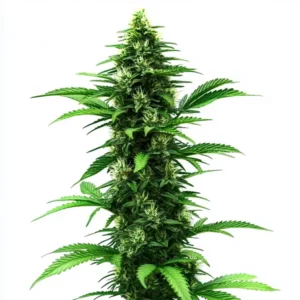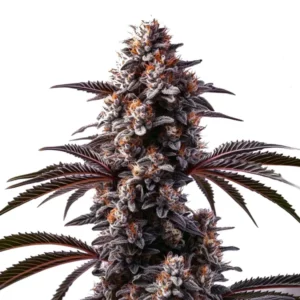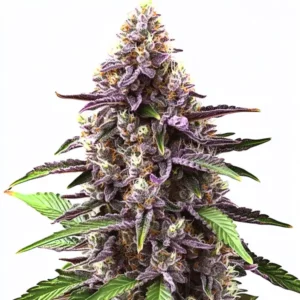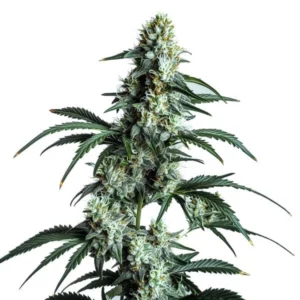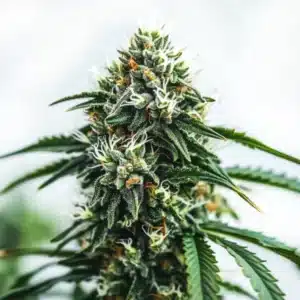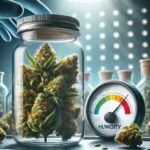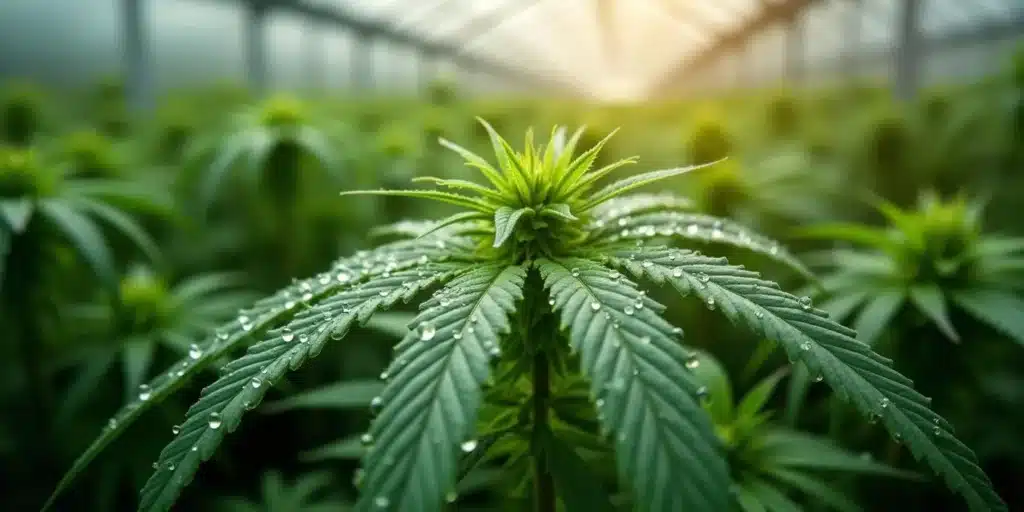
Humidity for Weed Plants: A Key to Successful Growth
One of the essential aspects of cannabis cultivation is understanding the significance of humidity for weed plants. It’s not merely about watering the plants and providing them with sunlight. It’s about creating an environment that closely mimics their natural habitat. And, an important part of that environment is humidity.
When you start growing cannabis, whether you’re a first-time seed buyer or an experienced cultivator, you’ll quickly realize that maintaining the best humidity levels for weed plants growth is crucial. It can significantly affect the health of your plants, influencing their growth, yield, and resistance to diseases.
Recommended Strains
Many growers, especially beginners, often overlook the importance of humidity. However, it’s one of the most crucial aspects of successful cannabis cultivation. So, let’s dive deeper into the world of humidity for weed plants and learn how to control it properly.
Obtaining the best humidity levels for weed plants growth involves a careful balance. Too little humidity can dehydrate your plants, while too much can promote the growth of harmful fungi. Thus, understanding and controlling humidity is a key element in the overall success of your cannabis cultivation efforts.
Keep in mind that the ideal humidity will vary depending on the stage of growth of your plants. By adjusting the humidity levels appropriately, you can create an optimal environment that promotes healthy growth and maximizes yield.
Defining Humidity and its Importance
Humidity refers to the amount of water vapor in the air. It’s usually expressed as a percentage, representing the amount of moisture the air holds at a specific temperature compared to the maximum it could hold at that same temperature.
Humidity is vital for weed plants because it affects their transpiration rate – the process through which they absorb water through their roots, transport it to their leaves, and release it into the atmosphere. This process is essential for nutrient uptake, cooling, and growth.
Understanding the importance of humidity for weed plants involves appreciating the role it plays in the plant’s overall physiology. In addition to affecting transpiration rates, humidity also impacts a plant’s ability to photosynthesize. Photosynthesis, the process by which plants convert light energy to chemical energy, is directly influenced by the quantity of moisture in the air.
When humidity levels are properly managed, plants can optimize their photosynthesis process, leading to healthier growth and higher yields. Therefore, mastering the intricacies of humidity can lead to a more effective and efficient cannabis garden.
Promos & Deals
Effects of High Humidity on Weed Plants
High humidity can have adverse effects on weed plants. When the air is too moist, plants slow down their transpiration, as there’s no need to release water into the already damp atmosphere. This slowdown can lead to stunted growth and nutrient deficiencies.
Moreover, a highly humid environment provides a perfect breeding ground for fungi and pests, which can lead to diseases like mold and powdery mildew. Therefore, managing humidity in weed greenhouses is of utmost importance.
It’s important to understand the effects of high humidity on weed plants. When the humidity is too high, not only does it disrupt the normal growth processes of the plant, but it also creates a conducive environment for the proliferation of pests and diseases. This is why managing humidity in weed greenhouses is a critical aspect of successful cannabis cultivation.
High humidity levels especially during the flowering stage can be detrimental. The dense buds of cannabis plants can trap moisture, leading to the development of bud rot, a destructive and fast-spreading disease. This underscores the importance of maintaining the ideal humidity for flowering stage in weed plants.
The Ideal Humidity for Different Growth Stages
A great way to understand the changing humidity needs of your cannabis plants is to think about simulating the seasons. The early growth stages mimic the high humidity of spring rains, encouraging lush, green development. As the plant transitions to flowering, you want to simulate the drier, warmer conditions of late summer. This means actively lowering humidity and increasing airflow to prevent the dense foliage and flowers from trapping moisture, which can lead to rot.
Weed plants require different humidity levels at different stages of their growth. For seedlings and clones, a high humidity level of around 65-70% is ideal, as it promotes root growth.
As they enter the vegetative stage, the ideal humidity drops to around 40-70%. During this stage, plants focus on leaf and stem development, and lower humidity encourages them to develop a robust root system.
Understanding the ideal humidity for different growth stages is crucial for the overall success of your cannabis grow operation. From the seedling stage to the flowering stage, each phase of growth has its unique humidity needs. By understanding these needs and adjusting your humidity levels accordingly, you can maximize the growth and yield of your plants.
When plants reach the flowering stage, they prefer even lower humidity, around 40-50%. The ideal humidity for flowering stage in weed plants is lower to prevent bud rot and other moisture-related diseases. At this critical stage, too much humidity can be harmful, so it’s important to closely monitor and adjust the humidity levels in your grow room.
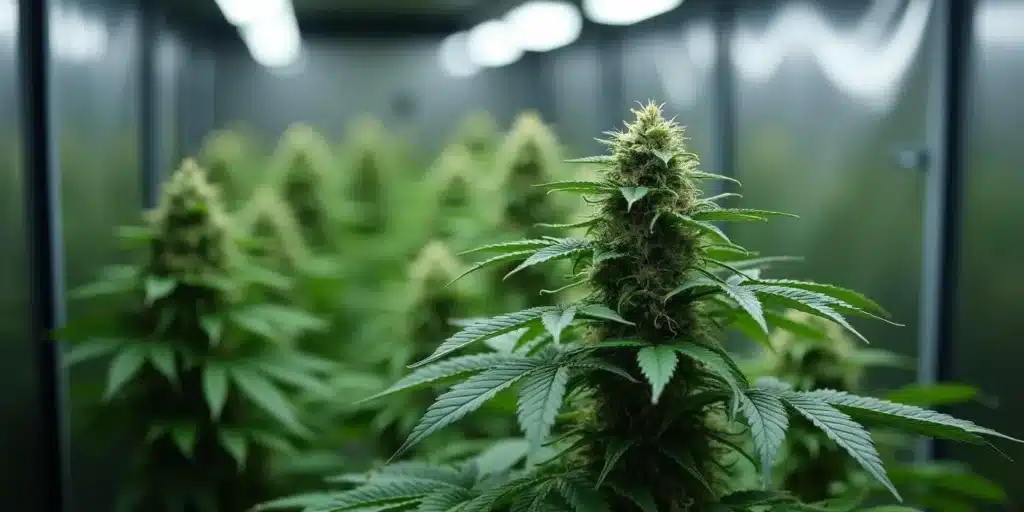
Controlling Humidity for Indoor Weed Plants
Learning how to control humidity for indoor weed plants is crucial for a successful harvest. Of all the factors, your air exchange system is the most powerful tool. Proper extraction is the number one factor in controlling humidity, as it actively expels the moist, warm air from your grow space.
To complement this, ensuring good air intake is essential, especially in flowering. A dedicated intake fan (intractor) bringing in fresh, new air helps create a balanced environment and prevents your tent from collapsing inward due to negative pressure from a strong exhaust fan.
Finally, good internal air recirculation is vital. You must prevent stagnant ‘pockets’ of humid air from forming within the plant’s dense foliage during flowering. Oscillating fans aimed between the canopy and the lights, not directly at the plants, will break up these pockets and ensure a consistent environment, drastically reducing the risk of mold.
Another effective way to control humidity is by using a dehumidifier or humidifier, depending on your needs. These devices allow you to increase or decrease the humidity level in your grow room with precision. Additionally, using temperature-controlled watering can also help maintain the right humidity levels.
Your watering schedule also has a major impact on humidity. When you drench the soil, ambient humidity spikes. During the flowering stage, it is critical to water your plants early in the day (soon after the lights turn on). Watering late in the day is risky because when the lights turn off, the temperature drops, and the humidity naturally rises. This combination of darkness, low temps, and post-watering moisture creates a perfect breeding ground for mold.
Remember, the key to managing humidity successfully is regular monitoring. Use a reliable hygrometer to keep track of the humidity levels in your grow room. This way, you can make necessary adjustments swiftly, ensuring that your plants remain in the best possible growing conditions.
Recommended Cannabis Strains from Blimburn Seeds
When it comes to choosing the right cannabis strain for your specific growing conditions, Blimburn Seeds offers a wide variety of high-quality options. Here are three strains that are known for their resilience and adaptability to different humidity levels:
- BC Diesel: BC Diesel is a strain that thrives in lower humidity levels. It’s an ideal choice for growers who live in drier climates or those who prefer indoor cultivation.
- Critical Daddy Purple: This strain is known for its resistance to mold and diseases, making it a great option for growers dealing with higher humidity levels.
- Wombat: Wombat is a robust and fast-growing strain that can handle a wide range of humidity levels. It’s perfect for both novice and experienced growers.
Choosing a strain that can adapt to your local climate or controlled growing environment can significantly increase your chances of a successful harvest. For instance, if you live in a region with high humidity, a strain with mold resistance might be your best bet. Conversely, strains that thrive in drier climates might be best for indoor growers who have more control over their environment.
Additionally, the strain you choose should also align with your growing skills and experience. Some strains are more forgiving and easier to grow, making them ideal for beginners. Others may require more specific care and are better suited for more experienced growers. Regardless of your level of expertise, there’s a strain out there that’s perfect for you.

FAQs About Humidity for Weed Plants
What is the best way to increase humidity for weed plants?
To increase humidity for weed plants, you can use a humidifier or place trays of water around your grow room. The water will evaporate and increase the moisture level in the air. Misting your plants with water can also help increase humidity, but be careful not to overdo it as it can lead to mold and other diseases.
Another effective method is grouping your plants together. Plants naturally release water vapor into the air, and by grouping them, you can create a more humid microclimate. However, ensure there’s enough space between them to prevent the spread of pests and diseases.
Moreover, adjusting your watering schedule can also help increase humidity. Watering your plants more frequently can raise the humidity level in your grow room. However, be careful not to overwater, as this can lead to root rot and other problems. It’s all about finding the right balance that works best for your plants.
You can also use a wet cloth or sponge to increase humidity. Simply wet a cloth or sponge and place it near your plants. As the water evaporates, it will increase the humidity in the surrounding area. This method can be particularly useful for smaller grow rooms or for providing localized humidity to specific plants.
How can I reduce humidity in my cannabis grow room?
If the humidity in your cannabis grow room is too high, the first step to take is improving ventilation. A well-ventilated grow room can effectively regulate humidity levels. Using exhaust fans can help remove moist air from your grow room and replace it with drier air.
Another way to reduce humidity is by using a dehumidifier. This device works by removing excess moisture from the air. It’s especially useful in later growth stages when weed plants prefer lower humidity levels.
Besides using a dehumidifier, there are other practical ways to reduce humidity in your cannabis grow room. For instance, you can adjust your watering schedule to water less frequently or use less water each time. Additionally, you can improve drainage in your grow room to ensure that excess water doesn’t linger and contribute to high humidity.
Lastly, choosing the right growing medium can also help control humidity. Certain growing mediums, like clay pebbles or perlite, are better at draining excess water, which can help keep humidity levels in check. Remember, every little bit helps when it comes to maintaining the optimum environment for your cannabis plants.
Can too much humidity kill weed plants?
Yes, too much humidity can be harmful to weed plants. High humidity levels can slow down transpiration, leading to stunted growth and nutrient deficiencies. It can also create an ideal environment for the development of mold and other fungal diseases, which can severely damage or even kill your plants.
Therefore, it’s crucial to monitor and control the humidity levels in your grow room. Regularly check your plants for any signs of diseases, such as yellowing leaves or a musty smell. If you notice any of these signs, take action immediately.
While it’s true that too much humidity can be detrimental to weed plants, it’s important to remember that each plant might react differently to humidity levels. Some strains are more resistant to the effects of high humidity, while others are more susceptible. Therefore, it’s always a good idea to learn about the specific humidity requirements of the strain you’re growing.
If you do notice signs of disease on your plants due to high humidity, don’t panic. Many of these issues can be resolved with the right interventions, such as adjusting your humidity levels, improving ventilation, or treating your plants with fungicides. The key is to act quickly and decisively to prevent the problem from spreading.
What should the humidity be during the flowering stage?
During the flowering stage, the ideal humidity for weed plants is around 40-50%. Lower humidity during this stage helps prevent the development of bud rot and other moisture-related diseases. It also encourages the plant to produce more resin, leading to more potent buds.
However, it’s important to remember that sudden changes in humidity can stress your plants. Therefore, it’s best to gradually decrease the humidity level as your plants transition from the vegetative to the flowering stage.
The flowering stage is a critical period in the life of a cannabis plant, and maintaining the correct humidity level is paramount. Too much humidity during this stage can cause buds to become moldy, which can significantly affect the quality of your harvest. Therefore, it’s essential to pay attention to your humidity levels during this stage and make adjustments as necessary.
Remember, the ideal humidity for flowering stage in weed plants is a guideline, and the optimal level can vary depending on the specific strain you’re growing and the conditions in your grow room. Continually monitor your plants and adjust your humidity levels as necessary to ensure that they remain healthy and productive throughout the flowering stage.
How does humidity affect the taste and potency of cannabis?
Humidity can significantly affect the taste and potency of cannabis. Proper humidity control can help maximize the production of terpenes, the compounds responsible for the aroma and flavor of cannabis. Higher terpene levels often result in a more flavorful and aromatic final product.
Moreover, proper humidity levels can also help boost the production of cannabinoids, including THC and CBD, leading to more potent buds. Therefore, by maintaining the right humidity levels throughout your cannabis plants’ growth stages, you can ensure a high-quality, flavorful, and potent harvest.
Humidity plays a significant role in the final quality of your cannabis harvest. When humidity levels are too high, it can lead to a harsh, unpleasant taste. On the other hand, if humidity levels are too low, it can cause the terpenes to degrade, resulting in a less flavorful product. Therefore, maintaining the right humidity levels is essential to producing high-quality, potent, and tasty cannabis.
Moreover, properly controlled humidity can also help improve the visual appeal of your cannabis buds. Buds grown in optimal humidity conditions often have a better structure and a more appealing trichome coating. So, in addition to affecting taste and potency, humidity can also influence the marketability of your cannabis product.


